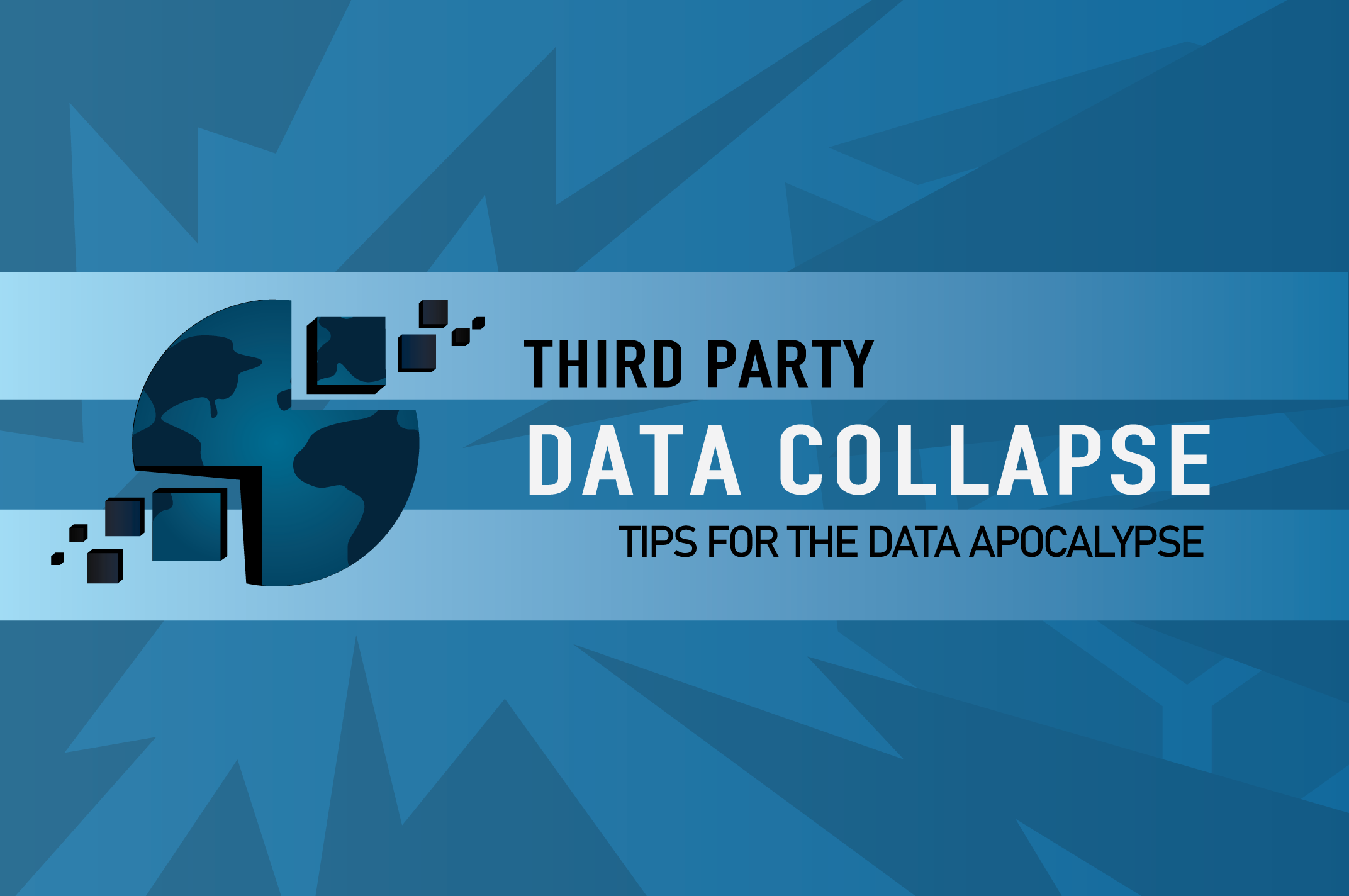In some ways, data is the lifeblood of marketing. It’s what businesses use to understand customers, track progress, and decide where to allocate resources. But in a world where third-party data collection is ending, what are marketers supposed to do? This blog post will explore the different types of data collection and discuss how you can adapt to a world without third-party data.
Introduction
The era of big data is coming to an end. Many major tech companies have announced plans to phase out third-party data collection in response to mounting public pressure. Regulations like the General Data Protection Regulation (GDPR) and the California Consumer Privacy Act (CCPA) make it increasingly difficult for businesses to collect data from third-party sources.
These changes will have a profound impact on the marketing landscape. Businesses will no longer be able to rely on large-scale data collection to target ads and create personalized experiences.
The problems with third-party data
Businesses often collect third-party data without people’s consent, then use it to target them in unethical ways. For example, they may use third-party data to create targeted ads based on peoples’ personal information.
So what does this mean for marketers?
First of all, it doesn’t mean that you can no longer collect data. It means that you need to be more creative about how you go about it. There are many different ways to collect data, and each has its advantages and disadvantages.
Types of Data
- First-party data – Businesses collect first-party data directly from customers through surveys and customer interactions. For example, a credit card company might collect demographic information and data about its customers’ spending habits. This data is valuable to businesses because it is reliable and accurate, and companies can use it to target customers effectively. They can also use it to improve customer experiences.
- Second-party data – When two businesses share data, that becomes known as second-party data. For example, a business might share its customer list with a trusted partner company to target those customers together. Second-party data also raises privacy concerns.
- Third-party data – Third-party data is consumer data collected by a company other than the company to whose customers the data pertains. Marketers like to use third-party data because it is considered more objective and accurate than other forms of data. Third-party providers such as Facebook or Google collect the data and then sell it to businesses. Third-party data is valuable because it is comprehensive and up-to-date. It includes information about consumers’ demographics, interests, and online behavior.
- Zero-party data – Customers voluntarily provide zero-party data, often in exchange for something of value. For example, customer feedback is a type of zero-party data. This data is valuable to businesses because it provides insights into customers’ thoughts and feelings about the company and its products.
Advantages of the various data types
First-party data, second-party data, and zero-party data have advantages and disadvantages. For example, first-party data is reliable and accurate, but it can be challenging to obtain. Second-party data is comprehensive and up-to-date, but finding a trusted partner company can be challenging. Zero-party data is easy to get, but it may not be as reliable or accurate as other forms of data.
It can be difficult for startups and new businesses to tap into these data types because collecting and verifying this data takes time. On the other hand, established companies generally have a wealth of first-party data that they can use to target new customers.
These data types are less likely to violate people’s privacy because more transparency is involved in collecting them.

Third-Party Data Collection:
For many years, businesses have used audience third-party data as a critical part of the marketing landscape. It’s a mainstay of targeted ads, creating personalized experiences, and optimizing campaigns.
How exactly is it collected?
Businesses collect third-party data by surveying consumers or mining public records. Social media platforms are a precious source of third-party data because they contain information about people’s interests and online behavior.
Third-party data collection: What are we losing?
One of the main benefits of third-party data is its scale. Third-party data providers have access to a great deal of consumer data, which they can sell to businesses. This data is often more comprehensive and up-to-date than other forms of data.
Another benefit of third-party data is its accuracy. Third-party providers are careful only to include accurate and verified information in their datasets. This means that businesses can be confident that their data is reliable.
Finally, marketers consider third-party data to be more objective than other forms of data. It is not directly associated with the company using it. As a result, businesses can use it to make decisions about their marketing campaigns without worrying about bias.
What does the phase-out mean, and what does it not mean?
The phase-out of third-party data collection does not mean that businesses can no longer collect data. It means that you need to be more creative about how you go about it.
The phase-out of third-party data collection does not mean businesses can no longer target ads. It just means that they need to use other forms of data, such as first-party data or zero-party data.
The phase-out of third-party data collection also does not mean businesses can no longer create personalized experiences.
How essential is third-party data?
Third-party data is an important tool for businesses, but it is not essential. Companies should use various data sources to create the most effective marketing campaigns.
What purpose does such data serve?
Businesses use third-party data for various purposes, including targeting ads, creating personalized experiences, and optimizing campaigns. It is helpful because it helps companies understand their customers better and target them with relevant content.
Is the data actually useful?
The data that third-party providers collect is often reliable and accurate. This means that businesses can use it to make informed decisions about their marketing campaigns. However, third-party data is not always accurate or dependable. It may be less reliable than other forms of data, such as first-party data.
Data Collection Alternatives
What are the alternative data collection tactics?
As we’ve covered, first-party data, zero-party data, and data gathered from social media platforms are all viable alternatives to third-party data. Let’s take a closer look at how each of these options works.
To collect first-party data, businesses need to gather data from their customers. They end up with reliable data perfectly tailored to their needs. However, it takes time to collect enough data this way to make meaningful decisions.
The most significant advantage of zero-party data is that consumers consent to its collection. However, as with first-party data, it takes time to collect enough zero-party data.
Data Collection Strategies:
- Customer data platform – Businesses use a customer data platform (CDP) to collect and manage first-party, second-party, and zero-party data. It allows them to track the data collected and understand where it came from. This can help businesses better use their data and target customers more effectively.
- Declared data – Declared data is a type of zero-party data collected when people voluntarily provide their information. Companies use it to verify the identity of people or to ensure that they are over 18 years old.
- Data scraping – Data scraping is extracting data from websites and other online sources. Companies can use it to collect data about customers, competitors, or market trends.
- Survey data – Survey data is a type of first-party data collected by asking people questions about their opinions and preferences. Businesses use this type of data to understand customer needs and target them with relevant content.
- Campaign tracking – Campaign tracking is a type of data collection that involves tracking the results of marketing campaigns. It can help businesses understand which campaigns are most effective and optimize their strategies accordingly.
- Data integration – Integrating different forms of data allows businesses to combine different types of data into a single, cohesive dataset.
In conclusion, businesses should use various data sources and data strategies to create the most effective marketing campaigns.
Marketing Tips For 2022 and Beyond
What else can companies do to ensure their marketing effects reach people who will turn into actual customers?
Digital marketing today is all about creating a direct relationship with new audiences and nurturing them until they’re ready to buy. It’s also about not wasting resources on marketing efforts that don’t work. Here are three essential tips for getting the most out of your digital marketing campaigns:
Segment your audience
Segmenting your audience will help you target each group with relevant content and improve your chances of converting them into customers. For example, your social media followers might be interested in different products than your email subscribers.
Understand what works and what doesn’t
It’s important to track the results of your marketing campaigns and understand which ones are working and which ones aren’t. This will help you focus your resources on the campaigns that are most likely to be successful.
Create a personalized experience
People are more likely to respond to personalized marketing messages. This means creating a unique experience for each customer based on their needs and preferences.
Create a Powerful Data Strategy
Of course, the problem that many businesses have is more to do with too much data than not enough.
Do you have a data strategy to make use of audience insights? Can your marketing team easily access data to power their creative decisions?
It’s common to have a lot of data but not know how to use it. It’s hard to find the time to analyze all of it, and even if you could, you’re not sure where to start.
Your data is piling up, but it’s also becoming increasingly complex as new channels and technologies emerge. It’s harder than ever to make sense of all this information and use it to improve your marketing and sales efforts.
Iron Focus Funnel Optimization and Analytics can help. We take all of your data – from website visits to email opens – and turn it into easy-to-read insights that will help you decide how to improve your marketing strategy.
Embrace a more personal marketing strategy, and contact us today to learn more about how we can help you make the most out of your data.



No responses yet